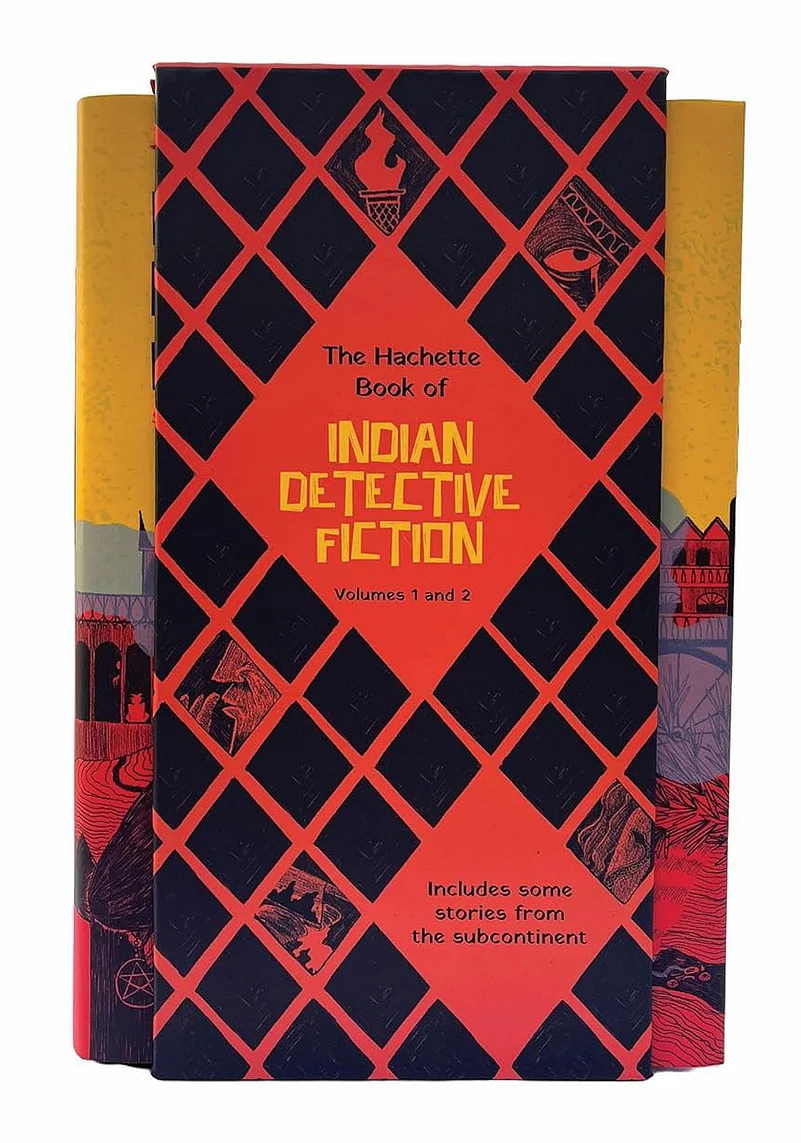The Hachette Book Of Indian Detective Fiction [volumes 1 And 2]
Tarun K Saint
Hachette India
Rs 1,039
Once upon a time, Indian crime fiction as we know it did not exist except in Indian languages. Most readers turned to Conan Doyle, Agatha Christie, and the rest to fill the gap. In Bengali, Urdu, and Hindi, there was a trend of detective fiction that had sprung up inspired by Poe and Conan Doyle. Saradindu Bandopadhyay’s Byomkesh made a hit, there were Premchand’s crime stories, and Zafar Omar’s Bahram series was transcreated from Leblanc to mention a few. The genre in English was slow to take off, though there seems to be no reason why this was so.
Till 10 years ago, English crime fiction in India was thin — the only offering in the genre seemed to be Keating’s Inspector Ghote series which had been written without the author having set foot in Bombay as it was then. Vikram Chandra made his mark with the noir ‘Sacred Games’ in 2006 and India was suddenly filled with detectives of all kinds gumshoeing their way through cities and villages and crime noir was carving a niche for itself in the country. Tarun Saint’s informative introduction covers the history for those interested.
As a tribute to the growing body of Indian detective fiction came the first-ever anthology of its kind, ‘The Hachette Book of Indian Detective Fiction’, which compiles intriguing whodunits, supernatural mysteries, serial murders, and absurd crimes spread across two volumes. The forms of writing differ and they are not all set in India. In Volume 1, you will find a crime drama set in Japan featuring Shnakarlal, the “world’s greatest detective”.
The anthology puts a wide variety of language authors at the reader’s fingertips through translations. As a result, one has access to the work of authors like Ambai who writes in Tamil and a whole host of others from the worlds of Urdu and Hindi. Detective fiction has the merit of being relaxing as opposed to the normally violent thrillers. All this makes it a very satisfying read where one tries to guess and outguess the plot. There is a plethora of red herrings and smoke and mirror techniques not to mention all the different complications that lead to murder — family feuds, greedy heirs, jealousy, revenge situations that range from the gruesome to the absurd covering all the whodunit ingredients, even including futuristic detective squads. There is also the usual clutch of detectives willing to let murderers go for a good cause.
Authors include the well-loved, spanning the expected and well-loved Satyajit Ray and Saradindu Bandopadhyay and modern up-to-the-minute writers like Madhulika Liddle, Kiran Manral, Anuradha Kumar, and Vish Dharmija. There is nothing to quibble about the content which covers the best-known names from past and present, except perhaps to say, why was so and so not there — admittedly, everyone cannot be included and the range is wide. It does, of course, cover everyone’s favourite types of murder from the locked room to the sprawling mansion and a few others that no one thought of. Killing makes an appearance and so does the Dilli of Shah Jahan’s time, adding an extra fillip to the whole experience.
The covers are a shriek of red and yellow with separate designs using elements from the stories for the two volumes both are counterpointed by the black and white icons of deerstalker hats, magnifying glasses, and more. Again, differing slightly for the volumes, running down the pages to balance the title spine and adding to the intrigue value — though it does flag Sherlock Holmes more than anything else. Endpapers too are embellished with artworks — a satisfied cat and shelves full of books with the titles of the stories. Possibly so much embellishment was not required given the satisfaction of the content, but then there has been a gallant attempt to make it a collector’s item of the books from an aesthetic viewpoint as well so that they can be judged by their covers.
















